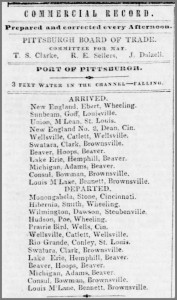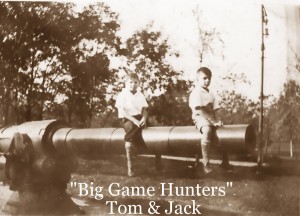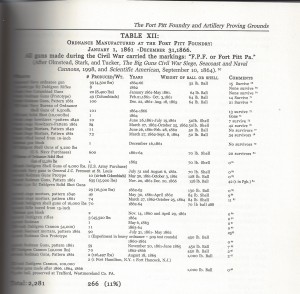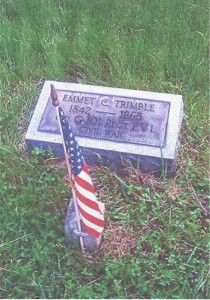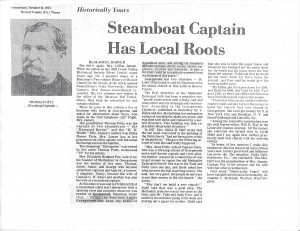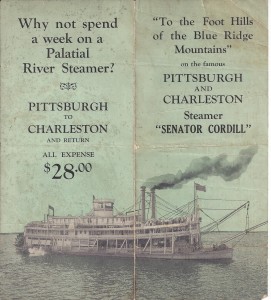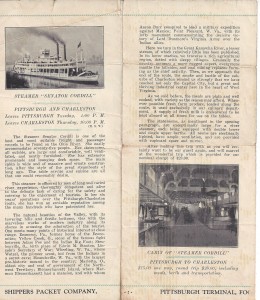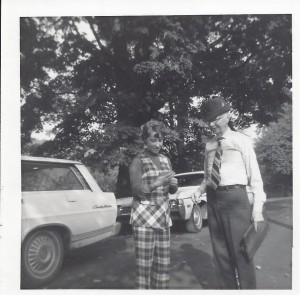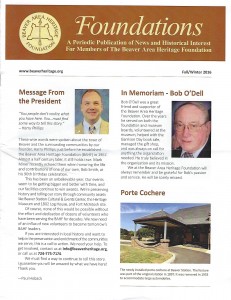
Foundations (Beaver Area heritage Foundation News Fall 2016)C
Foundations, the news for members of The Beaver Area Heritage Foundation, arrived by post a few days ago. The column on the Lewis and Clark Legacy Expedition dedication caught my interest. One of the five places in Beaver County where Lewis and Clark signs were recently erected was Georgetown. The caption reads:
“A leaky canoe was purchased here and they got stuck on a bar just below town”. [1]
Not a happy experience for Merriweather Lewis no doubt.
Of all the American rivers, the Ohio is the most important. By way of the Ohio more than any other route, the whole continent was explored and populated. Little known Georgetown, Beaver County, PA is located at Ohio River Mile Marker 38.9 from Pittsburgh. It is a river town of lost elegance and importance. Once there were hotels, taverns, general stores, a ferry, and wrought iron fenced homes with second story porches that spilled music into the warm summer nights. One wealthy resident even had a private airport through the 1950’s. Sadly little of that era is left. Like many of the towns along the Ohio, the old homes in Georgetown need repair. The hotels and taverns are gone. Only the churches remain.
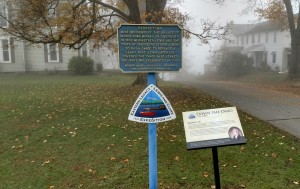 The Lewis and Clark Expedition legacy marker recently installed by the Beaver County Historical Research and Landmarks Foundation (BCHR&LF) is a two-part interpretive marker: the triangular sign is a trail marker and the rectangular sign contains a comment from the journal kept by Capt Lewis. A little-known fact is that Lewis in 1794 served as a member of the detachment of VA militia involved in putting down the Whiskey Rebellion. People in western PA, and most probably Georgetown, were rebels in that cause. The old family names, Dawson, Poe, Calhoon, and Mackall, were frontiersmen in Georgetown well before 1794 and long after 1803.
The Lewis and Clark Expedition legacy marker recently installed by the Beaver County Historical Research and Landmarks Foundation (BCHR&LF) is a two-part interpretive marker: the triangular sign is a trail marker and the rectangular sign contains a comment from the journal kept by Capt Lewis. A little-known fact is that Lewis in 1794 served as a member of the detachment of VA militia involved in putting down the Whiskey Rebellion. People in western PA, and most probably Georgetown, were rebels in that cause. The old family names, Dawson, Poe, Calhoon, and Mackall, were frontiersmen in Georgetown well before 1794 and long after 1803.
Slowly, I have become aware that the streets of Georgetown, which I had walked every day as a child, had a broad, hidden history. The Beaver County Historical Society put up a plaque, along Market St not far from my home dedicated to the Georgetown rivermen and the Lewis and Clark Expedition. [2] At least eight other historical markers are, as the crow flies, within a one mile radius of this marker.
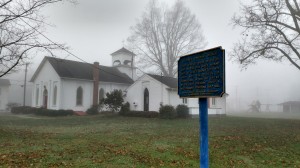
St Luke’s Episcopal Church (Beaver County Historical Research and Landmarks Foundation)
A few hundred feet south in a direct line is the marker for St Luke’s Episcopal Church (now Anglican Church). The first minister to the people of St Luke’s parish was Rev John L Taylor in 1814. On 11 Jun 1833, John Bever a tavern owner and surveyor deeded the lots to the Episcopal Church on which the
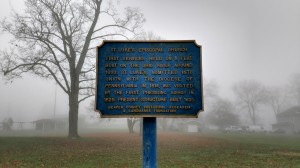
St Luke’s Episcopal Church Marker (Beaver County Historical Research and Landmarks Foundation)
present building was erected. The first service was held on 15 Dec 1833. It is fitting to mention that every Episcopal Church in the upper Ohio Valley has been a direct result of St Luke’s and the godly men who ministered there.

PA-VA Boundary 1785 (Beaver County Historical Research and Landmarks Foundation)
At the entry to town there is another marker noting the survey of the western boundary of PA completed in 1785. About one-quarter of a mile down river one of the original stone markers from the survey of 1785 stills exists. [3]
Nearby historical markers include The Point of Beginning [4], The Sandy and Beaver Canal, the First Paper Mill/Little Beaver Creek Bridge, and Smiths Ferry are directly opposite Georgetown on the north side of the Ohio River. The Death of Pretty Boy Floyd Historical Marker is just outside this arbitrary range.
Georgetown has at least eight historical markers and one-hundred-seventy-four residents per the 2010 census. It should have more markers, and more residents. The Georgetown Cemetery deserves a marker. The oldest stone in the cemetery is dated 1795. Small American flags flying from their holders in front of headstones denote the graves of Revolutionary War or War of 1812 or Civil War or Spanish-American War or World War I and WW II veterans. Many steamboat pilots and captains also rest in peace there. The River Hotel, which was built in 1802, deserves a marker. Rivermen, hard-working, hard-drinking, hard-fighting men that most river towns dreaded to see stop, stayed there. The Post office was established in 1802 – second in Beaver County after Frankfort Springs. It deserves a marker. The Georgetown United Methodist Church was built in 1877 by steamboat builders and carpenters deserves a marker for its unique architecture. The Indian Rocks, located in Smiths Ferry, were destination landmarks until flooded by the last series of dams were installed on the Ohio. Although the petroglyphs will presumably never be uncovered, their history should not be forgotten. Finally, the frontier fort in Georgetown should be remembered with a marker.
Many private homes in Georgetown qualify for the Beaver County Historical Research & Landmarks Foundation Heritage Marker Program but few owners have applied.
A classy small town with a big history – Georgetown.
Copyright © 2016 Francis W Nash
All Rights Reserved
No part of this website may be reproduced without permission in writing from the author.
[1] Quotation from the journal of Merriweather Lewis in 1803.
[3] The cut-stone marker is on private property owned by FirstEnergy Corp. Permission must be obtained to visit these national treasures.
[4] Different historical societies have installed multiple markers commemorating elements of the same basic event – the completion of the survey of the western boundary of PA which opened the Northwest Territory for settlement. The additional markers include Beginning Point of the US Public Land Survey, Gateway to the Northwest, Land Ordinance of 1785, and The Seven Ranges.
